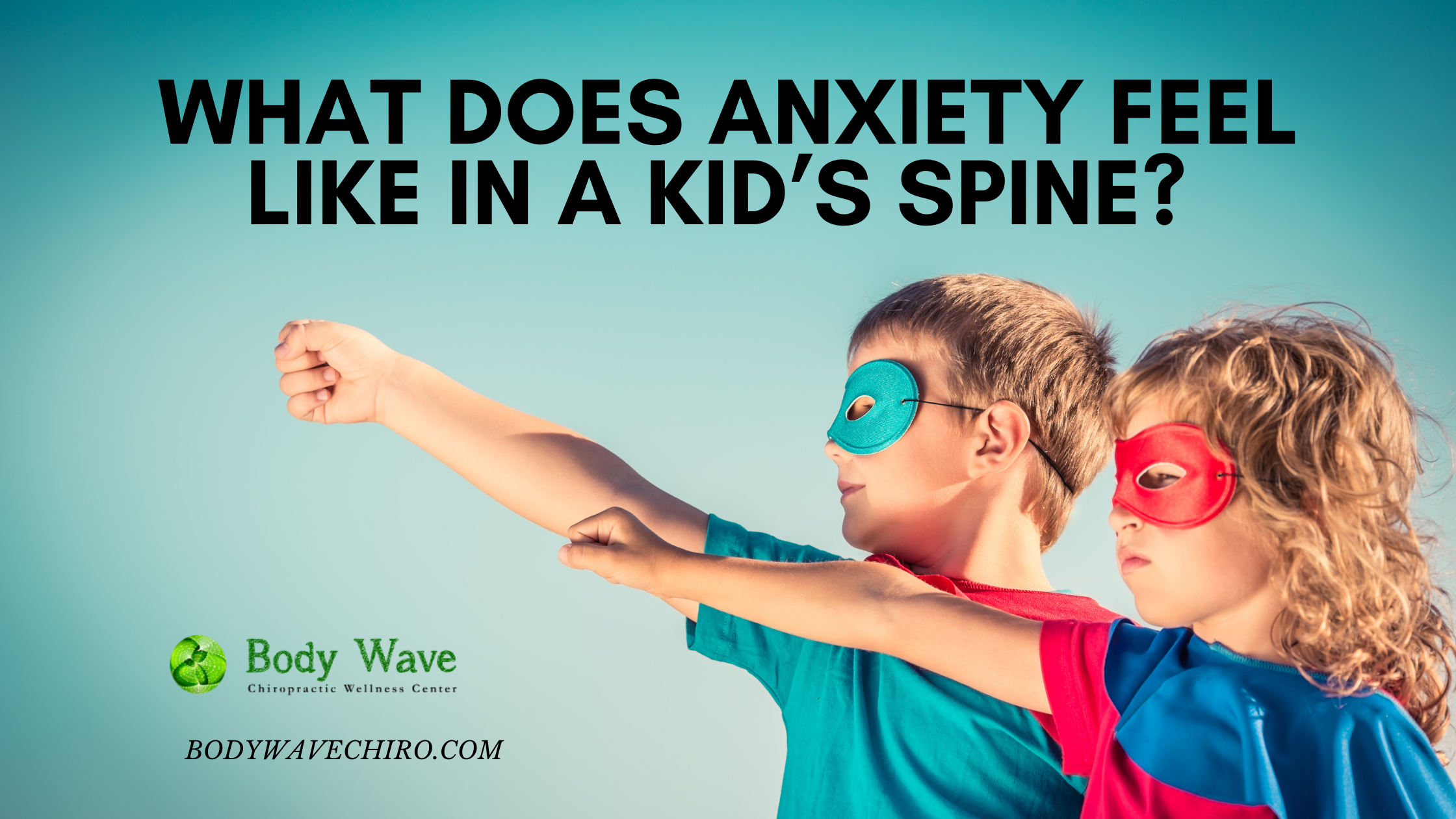
With summer schedule changes, this is the time of year we see more kids come in for their initial chiropractic examination. One common symptom for kids these days is anxiety.
It’s a powerless, draining feeling to see your kid struggle with anxiety. You want to give them every advantage so they can enjoy life and have fun. Instead, there are missed birthday parties, upset tummies, and meltdowns. It’s a lot to manage.
Anxiety is a sign of what’s happening in the brain.
Imagine the last time you got really stressed or scared: hopefully it lasted just a few moments. Now imagine staying
there and marinating in that feeling for weeks or months. You might not feel up for hanging out with friends either. Today I’ll connect the dots so you can see what chiropractic has to do with this in the first place. I’ll help you see what I see when I examine a spine, how anxiety locks things tight, what adjustments can do and then how changes are measured.
I’ll also give you things you can try at home – what I’d tell a parent in my office if they wanted the best chance for a
great outcome with their kid.
In the office, we’ll start with a spine and nerve exam.
I look for signs that the body has gone into ‘lockdown’ and can’t recover. Think of a school danger drill, where kids
huddle together in a corner, no one’s moving, and they’re waiting for the ‘all clear’, but imagine it doesn’t come. What
would that level of defense feel like in a spine?
One of the tests I do is a gentle spinal palpation, where I feel the bones of the spine from top to bottom. Spinal bones stack on top of each other and fit together like puzzle pieces. A normal, healthy spine has slight movement
between the bones: like if you slowly pushed down on a trampoline.
An anxious brain sends signals to lock the spine tight in defense. This will feel like pushing into a board – there’s no ‘give’. The spine feels rigid: that normal, healthy motion isn’t there.
Then I’ll look at posture.
From the side, I want to see if the head is forward and the front neck muscles are held tight. This is another outward visual sign that the brain is stuck in stress.
I also do computerized nerve tests, where I can measure the total amount of energy the brain signals through the
nerves out to the body.
If it’s way too high, for that kid it will feel like the foot is always on the gas pedal. They won’t be able to relax. These are some of the tests that can clearly show if anxiety or stress is locked in the body. For parents it can be nice to know it’s not all in their kid’s head.
When I work with these kids, adjustments help to gently ‘pump the brakes’ of the brain and nerve system. We get the brain to slow down, calm down, and signal differently. Then we can measure improvements, compared to starting point data.
Now – for things you can do on your own.
It really comes down to helping your child feel safe and certain in their body, that they feel and know in their body that
they can handle things coming their way.
The good news is that helping your child learn to self-regulate is kind of like developing a super power.
Richard Davidson of the Center for Healthy Minds mentioned this in one of the meditations I listened to recently: kids’
ability to self-regulate their nerve system is a better predictor for their overall success in life than the things we’d
normally think of (like IQ or test scores).
There are different ways to do this: one way is to pay attention to diet, first simply getting consistent with whatever
(healthy) diet you choose. This helps the body know what energy to expect, when. Ideally eliminate food additives if this
hasn’t been tried yet.
Routines are important. Ideally, get plenty of sleep at regular times. Morning or evening routines are helpful. Be strong and consistent with the basics: plenty of water, exercise and movement.
Put limits on screens, video games, and texting. This all pushes the brain back into stress.
Try simple breathing and mindfulness exercises with your child – it can be really empowering for them to have something to do when things feel overwhelming.
Like cleaning a dirty windshield, I see kids get to face each day led by a brain not stuck in stress, having a more relaxed perspective.
They can feel alive and safe, and don’t have to constantly monitor and control their environment and others. They become more open to new experiences.
Remember, some of the greatest athletes, performers, and leaders have had to work hard to learn to self-regulate their nerve system. Their clear, powerful routines to do this lead to amazing achievements.
